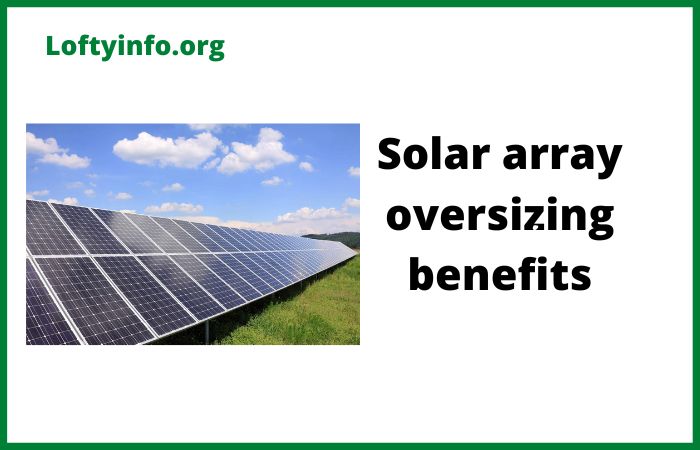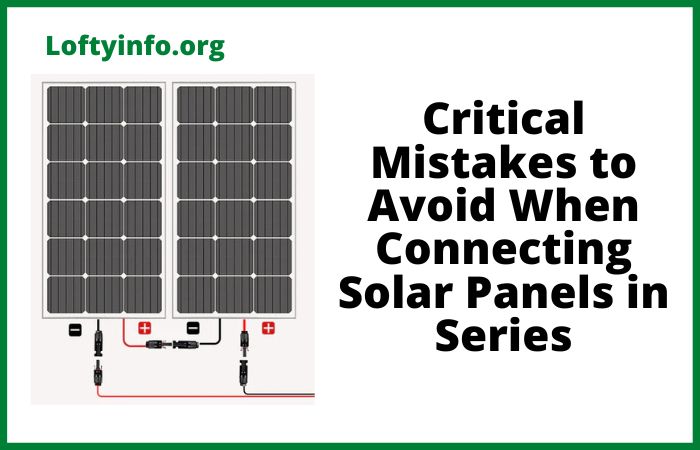Benefits Of Oversizing Solar Array
As solar energy continues to transform how we power our homes and businesses, system designers and installers are increasingly embracing a strategy that might seem counterintuitive at first: installing more solar panels than what the inverter is technically rated to handle.
This approach, known as solar array oversizing, has emerged as one of the most effective ways to optimize energy production and improve the return on investment for photovoltaic systems.
Understanding the benefits of this strategic design choice can help property owners make more informed decisions about their solar installations and unlock greater value from their renewable energy systems.
Benefits Of Oversizing Solar Array
1) Understanding the Fundamentals of Array Oversizing
Before exploring the advantages, it’s important to understand what solar array oversizing actually means.
In a typical solar installation, the inverter which is the device that converts DC power from the panels into AC power for use in your home or business has a specific power rating measured in kilowatts.
Traditional system design matched the solar array capacity closely to the inverter rating, maintaining a DC to AC ratio near 1:1.
Modern best practices often involve installing solar panels with a combined capacity that exceeds the inverter’s rated output, creating ratios commonly ranging from 1.2:1 to 1.5:1 or even higher in certain applications.
This design philosophy recognizes a fundamental reality about solar energy production: panels rarely operate at their peak rated capacity throughout the day.
Factors such as the sun’s angle, atmospheric conditions, temperature fluctuations and seasonal variations mean that solar panels typically produce significantly less than their nameplate rating for most operating hours.
By installing additional panel capacity, system designers ensure that the inverter operates closer to its optimal efficiency range for longer periods throughout the day and across different seasons.
2) Enhanced Energy Harvest Throughout the Day
One of the primary solar array oversizing benefits lies in the extended duration of meaningful energy production.
During early morning and late afternoon hours when the sun’s angle is low, an appropriately sized array would produce minimal power, barely engaging the inverter.
With an oversized array, these shoulder hours become significantly more productive, as the additional panels generate enough cumulative power to drive the inverter into its efficient operating range.
This translates into additional kilowatt-hours captured during periods that would otherwise be largely wasted with a conventionally sized system.
The benefit extends beyond just the beginning and end of the day.
On partly cloudy days, when intermittent shading reduces panel output, an oversized array provides a buffer that helps maintain consistent power delivery.
While a standard system might see its production drop dramatically as clouds pass overhead, the extra capacity in an oversized configuration helps smooth out these fluctuations, keeping the inverter operating efficiently even when individual panels are temporarily shaded or obscured.
3) Improved Performance in Suboptimal Conditions
Real-world conditions rarely match the perfect test scenarios used to rate solar panels.
Panels are rated at Standard Test Conditions, which assume a specific irradiance level, temperature and air mass that rarely occur simultaneously in actual installations.
In practice, factors like dust accumulation, temperature coefficients, degradation over time, and shading all reduce output below theoretical maximums.
Solar array oversizing benefits become particularly apparent when accounting for these real-world losses.
The additional panel capacity compensates for the various efficiency losses that inevitably occur in any installation.
When panels heat up on a hot summer day and their efficiency drops according to their temperature coefficient, the extra capacity helps offset this degradation.
As panels age and their output gradually declines over their 25-year-plus lifespan, the oversized array ensures that the system continues delivering strong performance well into its later years.
4) Maximizing Inverter Utilization and Efficiency
Inverters themselves have efficiency curves, typically performing best when operating between 20% and 100% of their rated capacity, with peak efficiency often occurring around 50-75% load.
An undersized or perfectly matched array might only push the inverter into its optimal efficiency range for a few peak hours on perfect days.
By contrast, an oversized array keeps the inverter operating in its sweet spot for significantly more hours throughout the year.
This increased utilization doesn’t just mean more energy production, it also means better economics.
The inverter represents a significant portion of the total system cost and is typically one of the most expensive components that may need replacement during the system’s lifetime.
By maximizing the useful work extracted from the inverter across more operating hours, oversizing improves the cost-effectiveness of this crucial component.
You’re effectively squeezing more productive value from your investment without proportionally increasing the most expensive equipment.
5) Economic Advantages and Faster Payback
The financial case for solar array oversizing benefits extends beyond pure energy production.
Solar panels have decreased dramatically in cost over the past decade, while inverters have seen less dramatic price reductions.
This cost dynamic makes adding extra panels relatively inexpensive compared to the overall system investment, especially when the incremental cost is weighed against the increased energy production.
In many jurisdictions, solar incentives and net metering policies are calculated based on inverter capacity rather than total panel capacity.
This creates a situation where system owners can add additional panels without affecting their incentive qualification or net metering capacity, essentially capturing more energy within the same program parameters.
The additional kilowatt-hours produced by the oversized array translate directly into greater utility bill savings or increased solar renewable energy credit generation, accelerating the payback period for the entire system.
6) Clipping and Peak Shaving Considerations
A common concern about array oversizing involves “clipping”, the phenomenon where the solar array produces more power than the inverter can handle, resulting in some production being curtailed.
While this might seem wasteful at first glance, detailed analysis reveals that clipping is often an acceptable tradeoff.
Clipping typically occurs only during a few peak hours on the sunniest days of the year.
The amount of energy lost to clipping is generally far outweighed by the gains in energy production during all other operating hours.
Most system designers target oversizing ratios where clipping occurs less than 1-3% of total annual production hours.
Modern inverters handle clipping gracefully, simply operating at their maximum output during these periods without damage or long-term effects.
The small amount of potential production clipped during perfect conditions is more than compensated by the substantial gains throughout the rest of the year, particularly during shoulder months, overcast conditions and early and late hours of each day.
7) Future-Proofing Your Solar Investment
Beyond immediate production benefits, oversizing provides valuable future-proofing for your solar installation.
As energy needs evolve, perhaps due to the addition of an electric vehicle, expanded home office equipment, or new appliances, an oversized array provides additional production capacity without requiring system modifications.
The array can accommodate increased consumption patterns while maintaining strong offset percentages.
As building efficiency improvements are made over time, better insulation, more efficient HVAC systems, LED lighting and the energy saved indoors combined with robust production can push systems toward net zero or even net positive energy status.
An oversized array positions the property owner to take full advantage of these efficiency gains without being constrained by an undersized solar installation.
Implementation Considerations
While the advantages are compelling, successful array oversizing requires careful planning and expertise.
System designers must evaluate roof space availability, structural capacity for additional panel weight, and electrical considerations for the increased DC current.
String sizing becomes more critical with oversized arrays to ensure that voltage parameters remain within the inverter’s acceptable input range across all operating conditions.
Working with experienced solar professionals who understand local climate patterns, utility rate structures, and equipment specifications is essential for determining the optimal oversizing ratio for any particular installation.
What works perfectly in one location or application may not be ideal for another, making customized design crucial for capturing the full benefits while avoiding potential pitfalls.
The strategic advantages of oversizing solar arrays have made this approach increasingly standard in professional solar design.
By capturing more energy across more hours, operating inverters more efficiently and providing better long-term value, oversized arrays represent smart system engineering that serves property owners well throughout the decades-long lifespan of their solar investment.
what technical specifications on a low frequency inverter mean
considerations when choosing between 12v, 24v and 48v for off grid system






